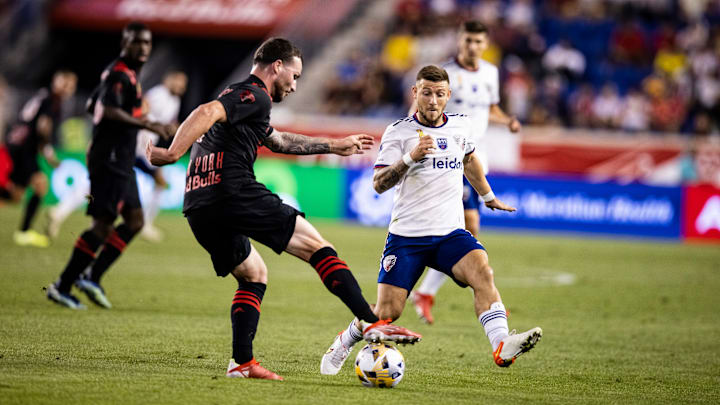The Major League Soccer trade market is more active than it has ever been, at least in the modern era of MLS. Just this offseason we've seen huge trades of allocation money, with the likes of Kellyn Acosta, Alistair Johnson and Lewis Morgan being traded within the league for over a million dollars in General Allocation Money. On Wednesday, this wild market reached a new level with DC United trading Paul Arriola to FC Dallas for over two million dollars of allocation money.
The intra-league market has always been a huge part of MLS. The re-entry draft, free agency and other trades have always shuffled players around the league, but this is different. With the influx of Garber bucks in the last collective bargaining agreement, the trades keep getting bigger and bigger, and nobody is off limits.
Arriola, for example, was DC United's biggest star and has been a full US international for years, yet he was available for another MLS club thanks to a comical caboodle of funny money. This development is a direct result of a few things. For one, allocation money is both more prevalent and more valuable.
As the league gets more ambitious with its signings, allocation money lets teams spend more. Allocation money is effectively extra cap space, allowing for more high-salary players and big transfer fees. It also gives teams extra flexibility to acquire international roster slots, draft picks and now proven MLS players.
This trend of huge trades is probably just starting. Over the next few seasons, blockbuster trades are going to be the new normal. And it's also worth noting that this didn't just start. LAFC traded Walker Zimmerman to Nashville for over a million in GAM, Darlington Nagbe was traded for huge allocation money twice and how could we forget the worst trade in MLS and Orlando City history, Dom Dwyer.
I'm not trying to slight Dom or diminish his accomplishments or contributions to the club, but looking at the history of trades in modern MLS, that's an undeniable black mark. Orlando gave Sporting Kansas City a package worth up to $1.6 million of allocation money, and while I'm not sure how much of that Orlando eventually had to give up, it's an undeniably bad figure.
Four years on from that deal, the trade market is thriving, but Orlando City haven't been a part of it. The Dwyer trade was the last big-time trade the club has made and it hasn't even been linked with many others.
Now, is this a bad thing? I'm not sure. You can't say Orlando's done a bad job building its roster under Luiz Muzzi and Oscar Pareja. Relying heavily on South American imports, Orlando created a strong core group of players. The likes of Antonio Carlos, Sebas Mendez and Pedro Gallese are some of the best at their positions in the league and were all foreign transfers as opposed to MLS-experienced trades. So do Orlando City need be more active in the trade market?
Like all forms of player movement, it depends. There is no one blueprint for building a championship team in MLS. There are key themes to all great teams, like elite Designated Players and some veteran leadership, but how to get those blocks is not a one-stop shop. Atlanta spent huge fees on young DPs and supplemented them with MLS experience like Michael Parkhurst, Toronto FC brought in proven stars and MLS veterans and NYCFC had a team of young stars and experienced leaders that took multiple seasons to develop. This is my long, winded way of saying, Orlando should only be in the trade market if it makes sense to be in the trade market.
No team has to do any one thing to be good in MLS. If there's a good player that fits Oscar Pareja's system available via a GAM trade, Orlando will pounce. If that never manifests and the club keeps hitting on its international signings, the active trade market won't really influence Orlando's roster build. And isn't that the beauty of MLS? There's no one way to build a team, and that's the best part.
